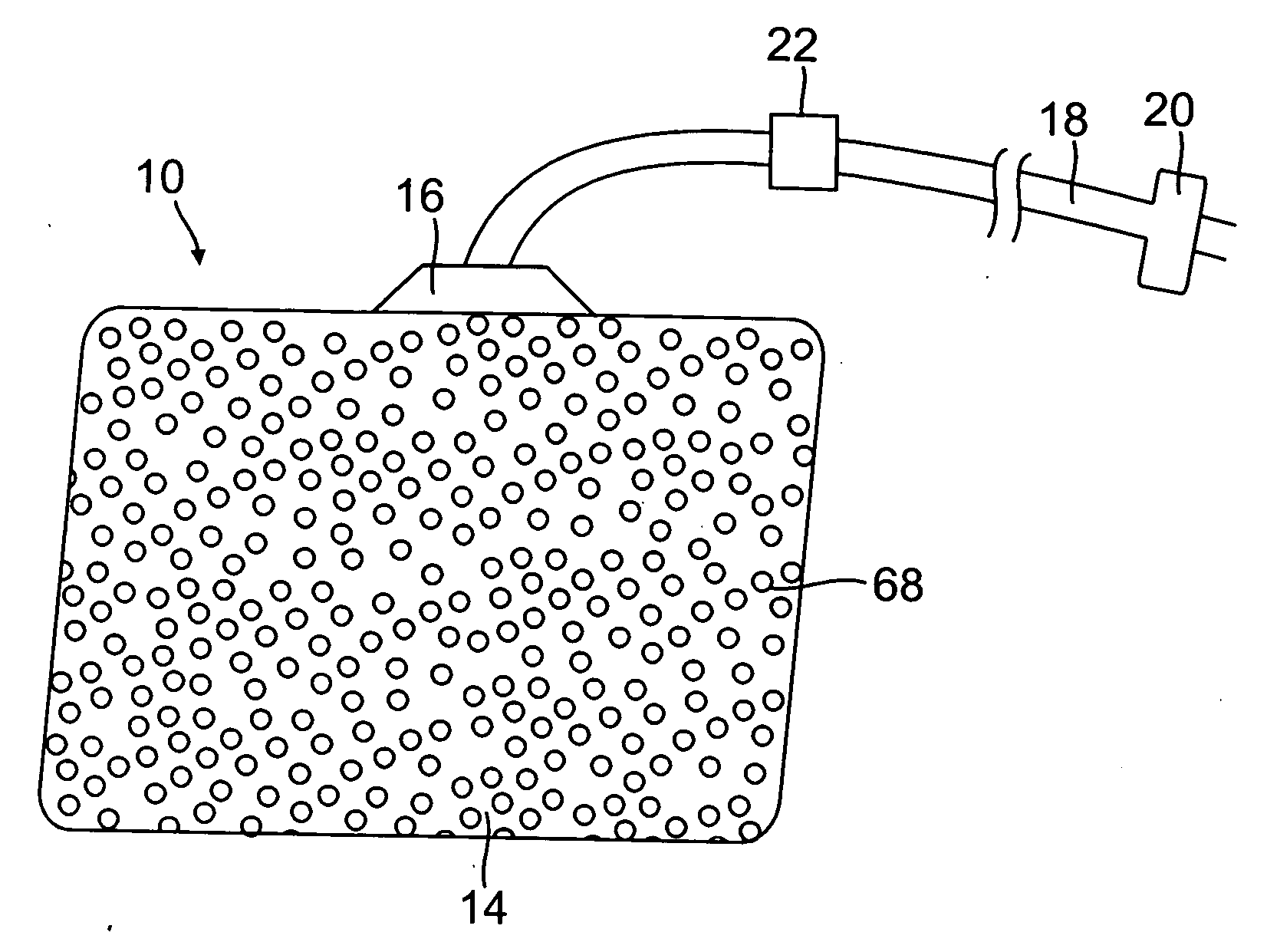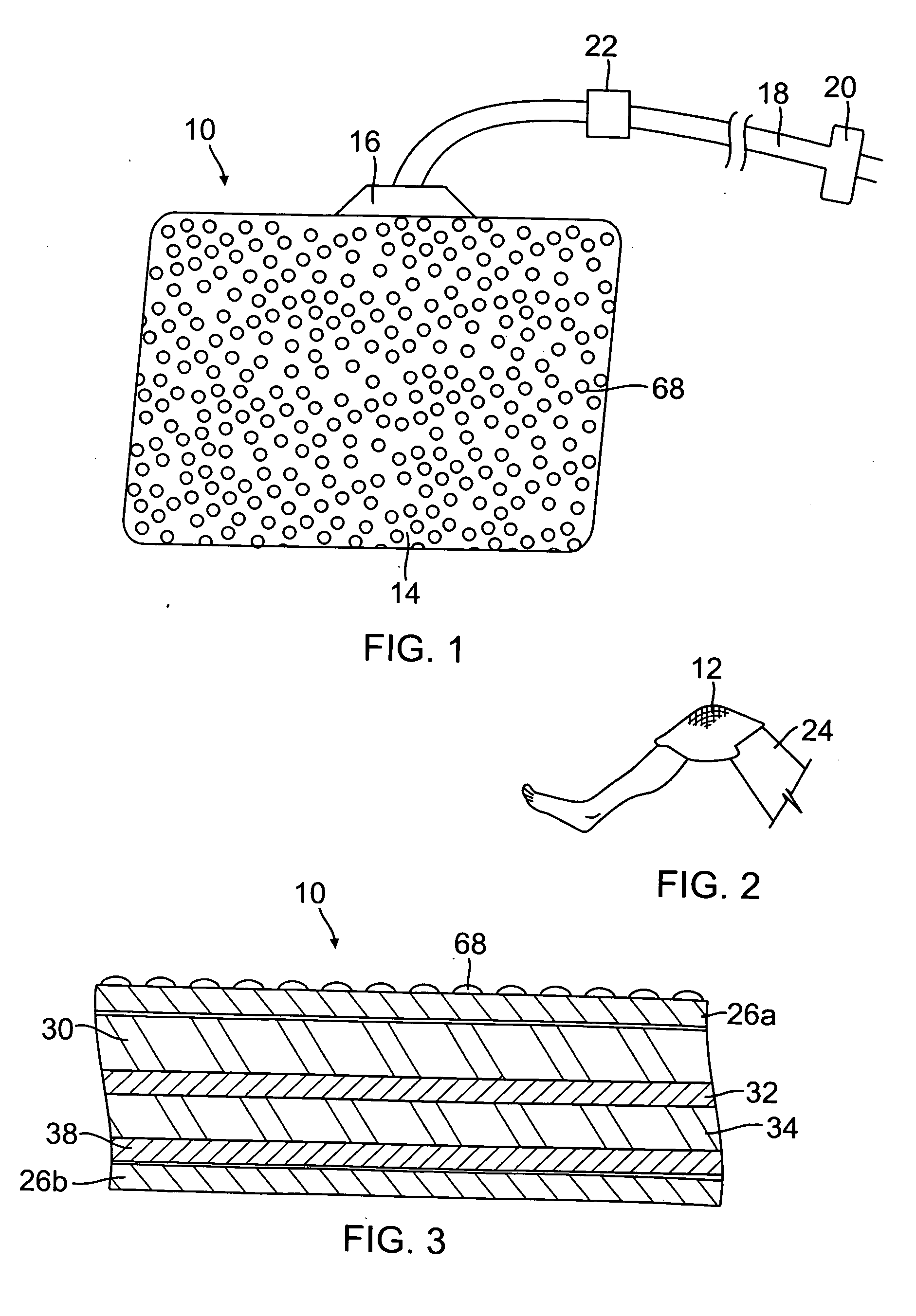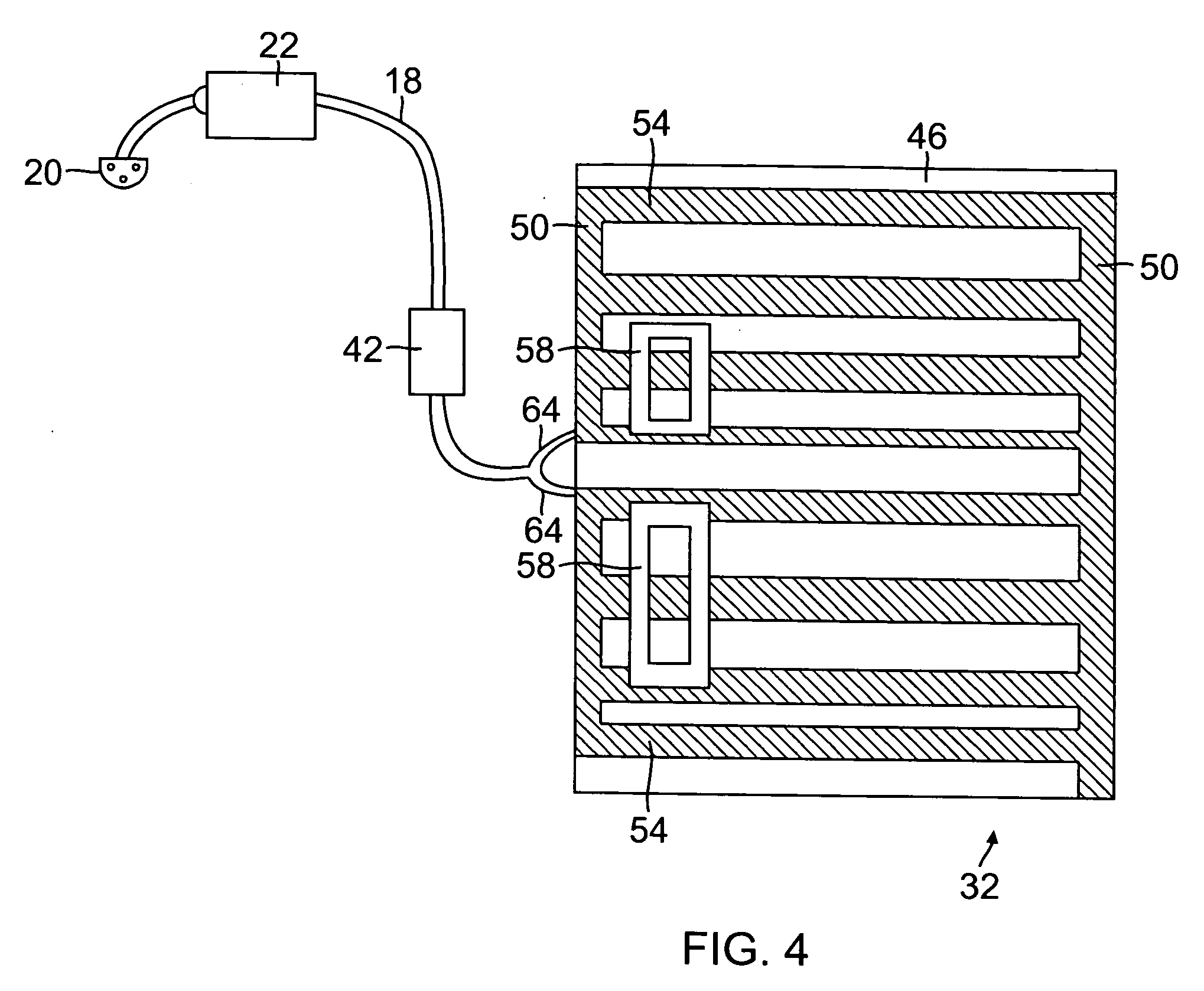Radiant heating apparatus and method for therapeutic heating
- Summary
- Abstract
- Description
- Claims
- Application Information
AI Technical Summary
Problems solved by technology
Method used
Image
Examples
Embodiment Construction
[0014]The following detailed description is of the best currently contemplated modes of carrying out the invention. The description is not to be taken in a limiting sense, but is made merely for the purpose of illustrating the general principles of the invention, since the scope of the invention is best defined by the appended claims.
[0015]Referring now to the drawings in detail, wherein like reference characters refer to like elements, there is shown in FIG. 1 a perspective view of a heating apparatus, featuring a heating pad 10. The heating pad 10 may be manufactured having a sealed outer membrane which may be made of synthetic or other suitable materials to prevent the ingress of foreign matter and moisture. Cover 14 which may be manufactured of cloth containing cotton, bamboo, other natural fiber, synthetic materials, and / or blends thereof and closed by a zipper, a hook and loop fastener (Velcro), or other suitable fastener. An electrical cord 18 may be used for carrying current...
PUM
 Login to View More
Login to View More Abstract
Description
Claims
Application Information
 Login to View More
Login to View More - R&D
- Intellectual Property
- Life Sciences
- Materials
- Tech Scout
- Unparalleled Data Quality
- Higher Quality Content
- 60% Fewer Hallucinations
Browse by: Latest US Patents, China's latest patents, Technical Efficacy Thesaurus, Application Domain, Technology Topic, Popular Technical Reports.
© 2025 PatSnap. All rights reserved.Legal|Privacy policy|Modern Slavery Act Transparency Statement|Sitemap|About US| Contact US: help@patsnap.com



